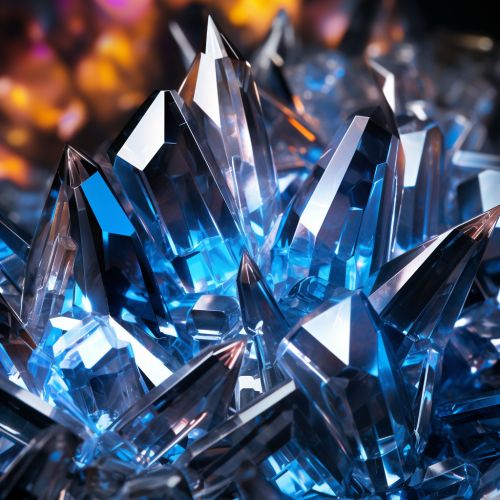Crystalline Silicon
Introduction
Crystalline silicon (c-Si) is a type of silicon that is significantly different from amorphous silicon in its crystalline structure and properties. It is the crystalline form of silicon, a tetrahedrally bonded semiconductor, which is the second most abundant element on earth. Crystalline silicon is the dominant semiconducting material used in photovoltaic technology for the production of solar cells.


Structure and Properties
Crystalline silicon has a diamond cubic crystal structure. Each silicon atom is covalently bonded to four other silicon atoms via sp3 hybrid orbitals, forming a tetrahedron. This structure results in a stable, low-energy configuration, which gives crystalline silicon its unique properties.
The properties of crystalline silicon, such as its mechanical stability, high melting point, and low density, make it an ideal material for many applications. It has a high electron mobility, which allows for efficient charge transport, and a large bandgap energy, which makes it a good material for photovoltaic applications.
Production and Processing
Crystalline silicon is produced from silicon dioxide (SiO2) through a process known as the carbothermic reduction process. This involves heating silicon dioxide with carbon in an electric furnace to produce silicon and carbon dioxide. The silicon produced in this process is known as metallurgical grade silicon (MG-Si), which is about 98% pure.
The MG-Si is then further purified through a process known as the Siemens process, which involves the reaction of MG-Si with hydrogen chloride to produce trichlorosilane (HSiCl3). The trichlorosilane is then reduced in a fluidized bed reactor to produce polycrystalline silicon, which is about 99.9999% pure.
The polycrystalline silicon is then melted and solidified in a controlled manner to produce single-crystal silicon, which is used in the production of silicon wafers for the semiconductor industry.
Applications
The primary use of crystalline silicon is in the production of silicon wafers for the semiconductor industry. These wafers are used as the substrate for the fabrication of integrated circuits (ICs) and other microdevices. Crystalline silicon is also used in the production of solar cells for photovoltaic applications. The high electron mobility and large bandgap energy of crystalline silicon make it an ideal material for these applications.
Crystalline silicon is also used in the production of thin-film transistors (TFTs) for liquid crystal displays (LCDs) and in the production of light-emitting diodes (LEDs).
Future Prospects
The demand for crystalline silicon is expected to continue to grow in the future due to the increasing demand for electronic devices and renewable energy technologies. However, the production of crystalline silicon is energy-intensive and has a high environmental impact. Therefore, research is being conducted to develop more sustainable and efficient methods of producing crystalline silicon.
